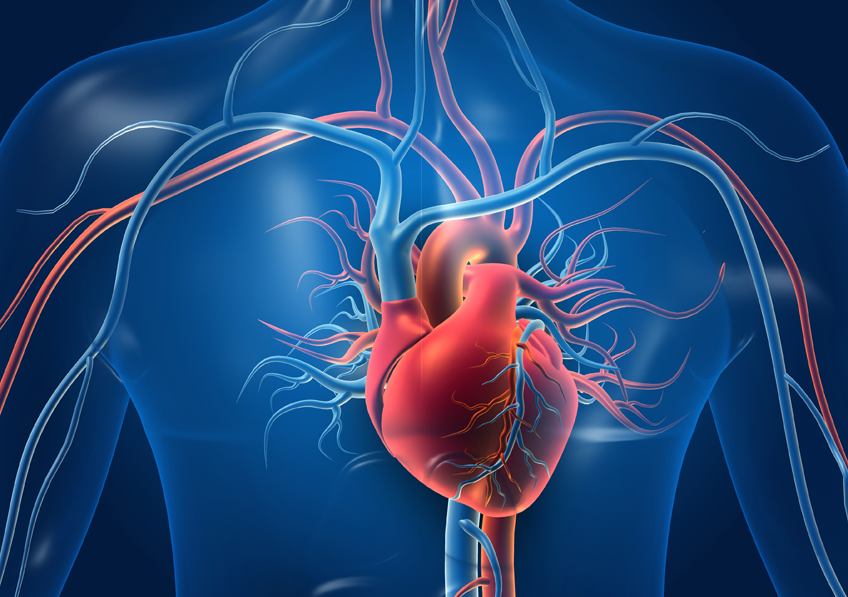
World premiere of non-invasive ultrasound therapy of heart valve diseases published in The Lancet
Currently, the treatment of heart valve diseases is based on replacing the dysfunctional valve with an artificial prosthesis. However, this procedure cannot be offered to all patients given its invasive nature. In a new study, a group of researchers from joint laboratories at Inserm, ESPCI Paris, CNRS and Université Paris Cité, in close collaboration with the start-up Cardiawave [1] spin off from the The Georges Pompidou European Hospital and the Physique pour la Médicine Paris laboratory (Inserm/CNRS/ESPCI/PSL), report for the first time the clinical effectiveness of “non-invasive” therapy using focused ultrasound. The clinical trial, carried out on a sample of 40 patients, significantly improved their health. The results are published in The Lancet .
Our heart beats approximately 70 times per minute at rest, or more than 100,000 times per day. It propels blood through the body at a rate of 4 to 5 liters per minute. This is why with age, the heart ages, the arteries and valves can become damaged [2] . More than 10 million people suffer from calcified aortic stenosis (CAR) in Europe and the United States, including 2 million severe cases, particularly among the elderly. In this disease, the aortic valve (positioned between the heart pump and the vascular system) calcifies, becomes rigid and can no longer open properly, leading to heart failure or sudden death. Today, the only existing treatment consists of replacing the defective valve with an artificial prosthesis, by open heart surgery via percutaneous arterial surgery. However, a significant number of patients are not eligible for these invasive procedures, due to severe comorbidities and limited life expectancy.
Finding a therapeutic alternative for these patients represents a major challenge for research. Thus, a research team from the French academic laboratories of Inserm has developed and tested a new approach called “non-invasive ultrasound therapy” (or NIUT). After validating the concept, the technology was developed by the company Cardiawave, a start-up spin off from a collaboration between the European Georges-Pompidou Hospital (AP-HP) and laboratories shared with Inserm, ESPCI and the CNRS (Physical Institute for Medicine Paris and Institut Langevin).
This approach is based on a technology that allows the aortic valve to be repaired through the precise and mechanical action of high-energy focused ultrasound delivered by a device applied to the patient’s thorax, with the aim of softening the valve and thus improve its opening.
A clinical trial was carried out on a sample of 40 patients suffering from severe forms of the disease spread across three clinical sites in France (Georges-Pompidou European Hospital, AP-HP, Paris), in the Netherlands (Amphia Hospital, Breda) and in Serbia (University Clinical Center of Serbia, Belgrade). They were treated in a single session, with follow-ups scheduled at 1, 3, 6, 12 and 24 months.
At the end of the monitoring, the scientists were able to observe:
- no deaths or serious events (heart attack, stroke, severe arrhythmias) linked to the intervention;
- a significant improvement in cardiac function (confirmed from 6 months after treatment with the device, reflected in particular by a 10% increase in the average surface area of the aortic valve);
- a considerable improvement in quality of life; an improvement in the symptoms of heart failure [3] : physical capacities, shortness of breath on exercise. One of the tests consists, for example, of measuring the distance covered by walking for 6 minutes (6-minute walking test) .
The aortic valve is made up of several leaflets (3 most often) which, when they calcify, prevent its proper opening. After ultrasound treatment, we observe a significant improvement in the opening surface of the aortic valve shown here in the right image.
“ These promising results represent a paradigm shift for the treatment of calcified aortic stenosis ,” explains Emmanuel Messas, principal investigator of the clinical study.
“They show that this innovative approach is feasible and safe, and has significantly improved the hemodynamic and clinical parameters as well as the quality of life of the patients participating in the clinical trial,” adds Mickaël Tanter, Inserm research director . at the Physics for Medicine laboratory in Paris.
“If its effectiveness is confirmed, this technology could represent immense hope for millions of patients suffering from severe forms of RAC and who currently find themselves in a therapeutic impasse,” explains Mathieu Pernot, Inserm research director in the Physique pour laboratory . Medicine.
The device called Valvosoft® is currently undergoing clinical studies for safety and effectiveness. It has not yet received marketing authorization (CE marking, etc.) and is currently intended exclusively for clinical studies.
[1] This study was carried out by Cardiawave, a start-up spin-off from the Institut Langevin (Inserm/CNRS/ESPCI) and Physique pour la médicine Paris (Inserm/CNRS/ESPCI/PSL) laboratories.
[2] Source: French Cardiology Federation
[3] The New York Heart Association (NYHA) heart failure severity score improved or stabilized in 96% of patients (n = 24); and the average score on the Kansas City Cardiomyopathy Questionnaire (KCCQ) – another score measuring the severity of heart failure – improved by 33%.





